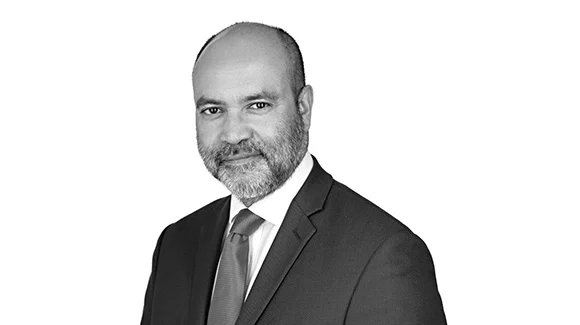Describe your journey to becoming a portfolio manager at Newton?
Fund management was originally never part of the plan. I am a scientist by background, having studied mathematics and theoretical physics at university. I have always loved learning and understanding how the world operates both at a macro and micro level. After leaving university, I wanted a job in which I could quench my thirst for knowledge. In 2004, I joined a discretionary portfolio management team within a private bank. I was working in a top-down macro role where I gained experience in multi-asset and absolute return investing strategies. My first role with portfolio responsibilities was in 2007 just before the global financial crisis (GFC) hit. That was a baptism of fire. However, it helped me form a key part of my investing philosophy which is based around the importance of protecting capital, both in real and absolute terms. As part of my development, I wanted to do more bottom-up fundamental investing and in 2011 I was given the opportunity to join Newton’s multi-asset and charities team.
What is your role at Newton today?
I co-manage Newton’s flagship multi-asset strategies. I also run the flagship SRI and sustainable growth and income strategies for charities. Alongside this, I manage several segregated mandates for endowments and foundations with an ethical and/or sustainable focus. As a result, I have worked with a number of universities and endowments helping to evolve their investment policies. My experience with helping clients build solutions to meet their investment and sustainable objectives has positioned me to develop the FutureLegacy range on which I am lead portfolio manager.
How has multi-asset investing had to adapt to a more volatile interest rate and inflation environment?
I am not sure that our approach has had to change; we have always been very focused on long-term trends and understanding the environment we are in. Our process takes a fundamental, long-term approach to investing. We focus on areas where we see structural growth opportunities and avoid areas of structural decline using our thematic lens. The key difference we see in this environment versus the previous decade is that the expected return – or ‘hurdle rate’ – we require to invest in equities is now higher. This is mainly because you are now getting a return on cash which is a ‘risk-free’ asset. As a result, equity valuations more recently have come under closer scrutiny as other asset classes, such as bonds, are yielding attractive returns. We now have a wider universe to build portfolios. The key is to use this opportunity set in a fundamental and flexible manner to react to an economic backdrop which we believe is going to be more volatile than in recent history.
What makes you a good multi-asset manager?
Investing is inherently probabilistic and being able to put the odds on your side is key. To do that you have to continually question your assumptions. I am keen to explore new ideas and try to surround myself with people who have different perspectives, some of whom may disagree with me. The more you learn the more you realise how much more there is to know. It is important to continually adapt and challenge yourself and those around you, especially in a more volatile investing environment.
You are a named manager on several Newton strategies. How do you divide your time?
My time is spent between managing portfolios, doing deep fundamental research and servicing clients. A core part to this is working out what my view of the world is (using an unrestricted universe and applying that to every mandate). It is then possible to tilt or adapt that view based on the risk and return profile of the client. So, while it looks like on paper that I manage very different strategies, there are synergies between them.
How would you describe your style as a portfolio manager?
I would not describe my investing style as having a growth or value bias. I believe in building balanced portfolios that can adapt to differing investment environments. I have a quality bias and an innate conservatism in my approach to investing and building portfolios. This leads to a valuation-focused lens where we look for companies with good free cashflow and structural growth opportunities. I avoid highly leveraged companies with weak balance sheets and areas of structural decline. Ultimately, good multi-asset investing is about risk management and having a mix of investments in your portfolio that provide diversification in different market conditions.
Why do you think a multi-asset strategy should appeal to investors?
We have moved from a low interest rate regime where equities were the only game in town, to what is likely to be a more volatile interest rate environment. Therefore, having a wider toolkit (a mix of assets from a broad universe) is important to navigate this, and choosing when to use them. This should in turn provide better risk-adjusted returns.
What are some of the most interesting holdings in the portfolios and why?
The world is now more aware of the stresses society has placed on the Earth’s natural resources and in particular its climate. To meet governments’ ambitious net zero targets and decarbonisation goals we need to see a fivefold increase in investments. Approximately 25% of global carbon emissions come from the heating and cooling of buildings, so companies that can help improve the efficiencies of these systems are going to see increased demand. About 35-40% of a building’s electricity cost and carbon footprint comes from its heating, ventilation and cooling system (HVAC) and therefore the payback period for installing more efficient systems is compelling for building owners. Elsewhere, we are living in a more digitalised and connected world, which alongside themes like greening technology and electrification, will lead to an increased demand for semiconductors. This makes this sector particularly interesting.
What key themes will form part of multi-asset in the years ahead?
One theme is the huge spend that must happen to help the world meet its climate objective and limit global warming. Over the last few years there has been a huge focus on the ‘E’ of ESG, but it is important to think about economic and social policies and how they marry together. How we navigate that by investing behind government and social politics will be crucial. Elsewhere, ageing populations will require more efficient use of healthcare such as the integration of artificial intelligence in diagnostics and diagnosis. We have been through a period of loose monetary policy that has created fragility in the system and a big divergence between asset prices and the real economy. As such, I think we will start to see a shift in balance towards labour and the real world which could mean more volatile asset prices. But in the long run, I think this should lead to a better allocation of capital and more stable economy.
What would you say are Newton’s strengths in multi-asset investing?
A number of investment houses have teams that sit in silos. At Newton, our multi-dimensional research process is designed so that all the teams talk to each other. This platform helps us to generate and share ideas that might slip through the cracks at other firms. In addition, Newton’s long-term focus means we can step away from the noise and align our horizon with that of our clients, enabling us to think about big picture events instead of getting caught up in short-term noise. The mixed assets investment team is well balanced in terms of perspectives and ideas, and we challenge each other to get the best outcomes for our clients.
What do you enjoy doing outside of the day job?
I have a young daughter so enjoy spending time with her. I also really enjoy being outside, exploring the world and understanding different cultures. It goes back to my love of learning and understanding and gaining different perspectives on life. I also love sport such as football and cricket.
What’s the best piece of advice you’ve been given?
Be aware of how much you do not know and always question the information around you. Embracing different perspectives is key.
What issue should most concern investors now?
We are in a very different cost environment compared with the last decade and there are a lot of ‘experienced’ investment professionals that have never seen an inflationary period and significant interest rate rises. The last decade, which had ultra-low interest rates, is likely to be the anomaly in history. As a result, there has been a large misallocation of capital that will have to be unwound. The higher cost of funding will likely reveal fragility in the system. We have seen examples of this in the recent past with regional banks in the US. Accordingly, I would say be aware of leverage. Another concern is rising geopolitical tensions. We have probably been through one of the most peaceful times in history, but geopolitical tension is rising.
What do you most enjoy about your job?
I am learning every day, whether it is about businesses, the world, or how things are changing. It is a privilege and huge responsibility managing assets for clients whether it be in the not-for-profit sector where the returns we are generating are being used to meet charitable objectives, or for individuals saving both in and for retirement.



